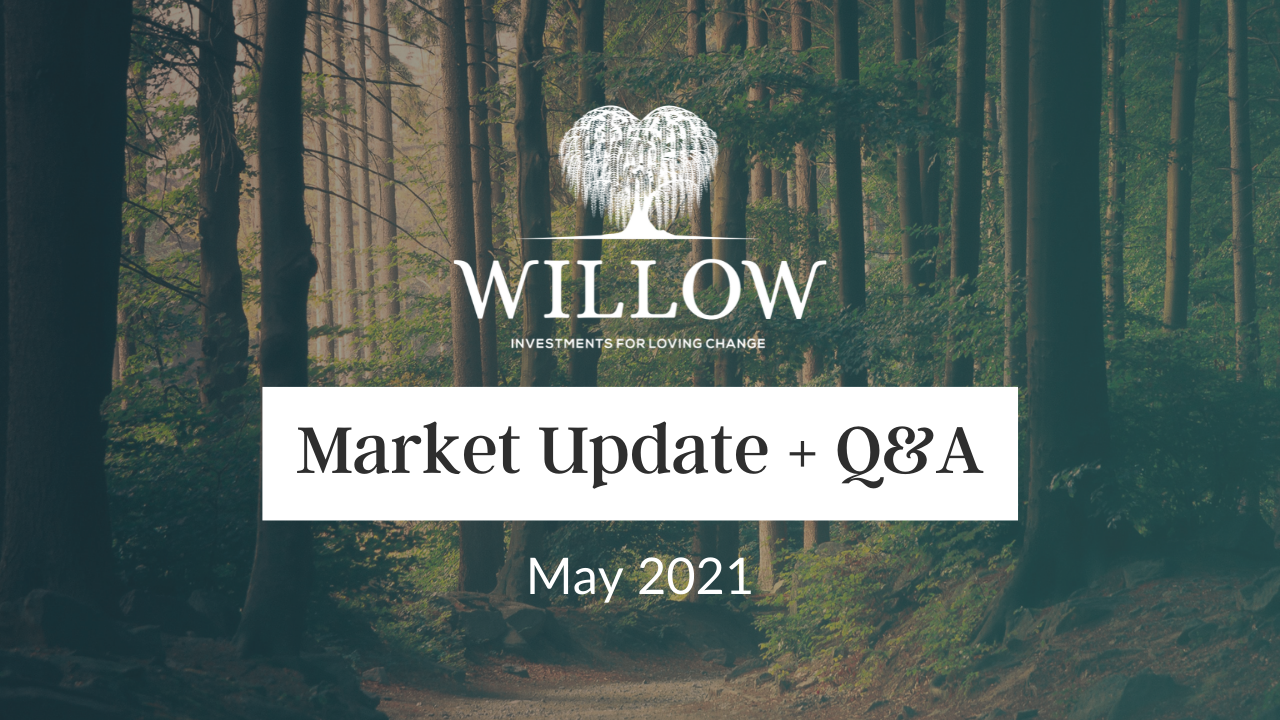Market Update + Q&A for May 2021
See below for our May Market Update + Q&A. Summary points below the video.
Market Update & Q&A Video Summary (May 2021):
- Our volatility risk indicator, which is a measure of the implied move in markets over the next 30 days, has shown a slight uptick, a little bit above the recent average, but overall, this is not a red flag for us. The CDS spreads, which essentially show the price of insurance on a company going bankrupt, have all tightened or come down over the past year which is saying to us that there is not a high probability of default in many publicly traded companies. High yield bonds have moved up since the beginning of April, but it is a very small movement, which doesn’t signal a massive risk warning, just that we need to continue paying attention. Bond spreads have historically been in a very tight range, and that trend is continuing to hold.
- Our treasury chart, which shows the constant maturity or what different time frames of treasuries are paying out in terms of yield, continue to be on the downward trend that started in the 80s. In 2020, the rates came up and caused some increased volatility in markets, but the long-term trend is still pointing to lower rates, potentially negative interest rates, down the road unless we see a breakout of that channel.
- Manufacturing has recovered from the dip due to COVID. All in all, US Manufacturing looks good.
- For consumer health, overall the trend is okay. There are some mixed signals around the consumer. We’re about 10% higher than pre-COVID levels in terms of consumer spending, which could be due to pent up demand or inflation.
- About 87% of S&P 500 companies have reported positive, or had beat their earnings projections for Q1, which is significantly high. This was mostly expected because of the previous quarter’s low numbers. We’re also experiencing a sector rotation where there has been this massive run-up in tech companies, or high beta companies, and now we’re seeing a lot of rotation out of those companies. This signaled to us to pull back on our positions in this sector.
Questions from Q&A
- There’s been some uptick in volatility recently and some broad negative chatter in the news. Could to speak to what some of the volatility and sentiment-driven discussions might be geared toward and how that would affect things?”
- “Why haven’t Trump’s tariffs been lifted and do you expect that they will be?”
- “Do you believe the Fed is right, given the soaring prices in everything from lumber to labor, that prices will drop once COVID 19 fades away?”
- “Are natural resource stocks a good inflation play given their positive correlation to inflation?”
- “There are many in the investment community that have predicted the death of the 60/40 structured portfolio. Do you believe, given record low interest rates, a bear market, high multiples, and constant uncertainty, that the 60/40 portfolio will continue to be recommended by some asset managers?”
To set up a meeting, please click here or give us a call.
Best regards,
The Willow Team
+1 413 236 2980




